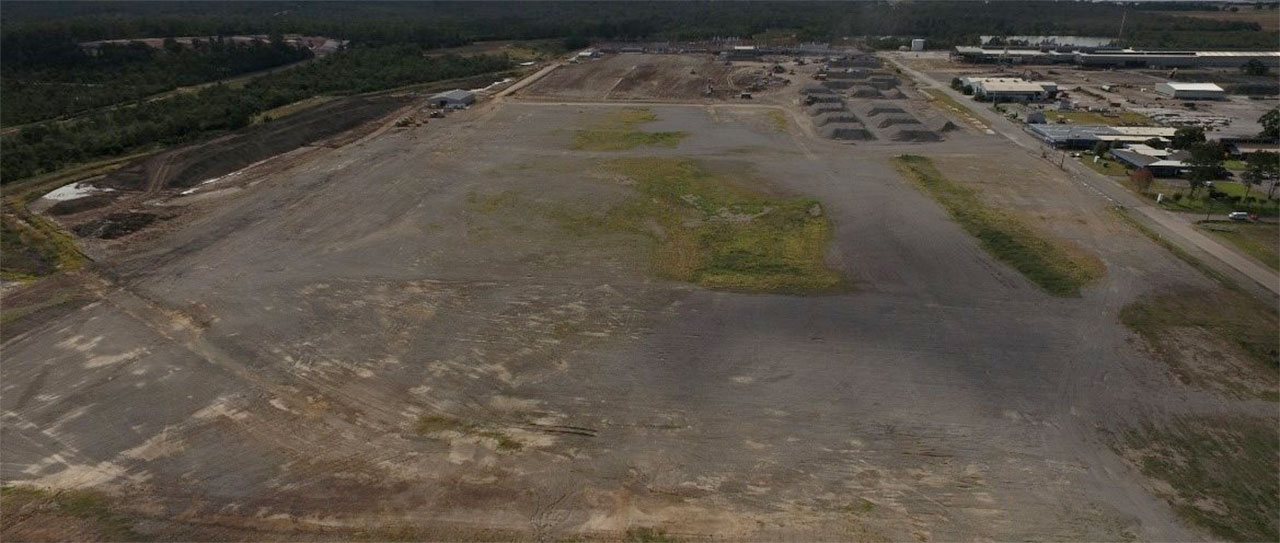Demolition and Remediation

Hydro completed an initial assessment of the buildings within the site, remediation requirements, and long-term opportunities for adaptive re-use of buildings.
These investigations and consultation informed the project plans and objectives.
Demolition by CMA Contracting
In April 2017 CMA Contracting were awarded the demolition contract for the Kurri Kurri Site following an 18 month tendering process. CMA Contracting has operated for more than 30 years in large-scale industrial demolition and resource sector plant deconstruction, including the demolition of steel works, chemical and petrochemical plants and power plants.
There were several parts to the demolition process:
Early Works: this is the relatively simple clean-up work that could be done without any specific approvals.
Stage 1 Demolition: this included demolition of the majority of site buildings and structures, excluding structures such as stacks, buildings with a potential for reuse, buildings storing waste materials, and below-ground infrastructure.
Stage 2 Demolition: this included the tall stacks and removal of infrastructure down to approximately 1.5m below ground surface.
Remediation
Remediation includes the excavation of contaminated soils and the on-site containment of these, along with non-recyclable waste material. Remediation has now been approved after a rigorous assessment by the Department of Planning, Industry and Environment (DPIE).
The project, which began in 2014, is primarily for the construction of an onsite, engineered containment cell, and the transfer of the contents of an existing approved stockpile of mixed waste generated during the 1970’s and 80’s, the first decades that the smelter was in use. Several pockets of contaminated soil, along with some demolition and other smelter waste that cannot be reused or recycled, will also be placed in the cell.
Daracon Contractors – part of the Daracon Group – was awarded the remediation contract in December 2019, to carry out the construction of the containment cell and placement of all of the mixed waste and other materials.
The 2000-hectare site is mostly buffer land that requires no remediation. A large proportion of this is highly valued bushland with significant conservation value. The majority of that land will be maintained in its natural state, as an offset for residential development planned near the Gillieston Heights and Cliftleigh residential corridor along Cessnock Road, and employment lands planned for around the smelter site, closer to Kurri Kurri and Weston, and straddling the Hunter Expressway at Hart Road.
The NSW Government will take ownership of the containment cell once it has been completed and independently audited, a process that will ensure the integrity of the cell upon completion and over a five-year period post-construction. The containment cell will be owned and managed by the Waste Assets Management Corporation (WAMC), part of the Department of Planning, Industry and Environment. WAMC has the experience and expertise to manage landfills and containment cells on behalf of the NSW Government. The ongoing management of the cell will be paid for entirely by Hydro, through a monetary contribution to be administered by the Department.
In each case, reuse or recycling of materials is the preferred option. This covers everything from the basic reuse of computers and furniture by donating them to others, through to finding a recycling option/s for the spent pot lining material currently stored in sheds on site. Site materials including concrete, metal and smelter wastes (such as separated spent pot lining) that can be recycled, will be.
Our community reference group (CRG), which was established with the purpose of bringing community input to the project, was involved in the development of criteria to be used in shortlisting potential recyclers of the spent pot lining. Discussions about this are recorded in meeting minutes which are available to view on our Community Reference Group page. While this recycling process is separate to the remediation of the site, Hydro wished to involve the community in the selection of the spent pot lining recycling process.
Over the past two years, Hydro has worked with recyclers of spent pot lining, and to date this has resulted in more than 40,000 tonnes of the material being sent for recycling.
The early and straightforward remediation work is virtually complete. This includes the removal of bricks and concrete from areas in the buffer zone, and the repair of landforms. Some areas had a variety of domestic and commercial waste on them (illegally dumped by others), while other areas had large concrete blocks, and other non- hazardous waste materials from the smelter. These areas have now been cleaned-up and the land regraded, and it is now ready for future use. In addition, some decommissioning and preparation for demolition has commenced, such as the removal of asbestos and recovery of aluminium busbars and pot doors.
Our YouTube channel has videos showing progressive demolition of the site.